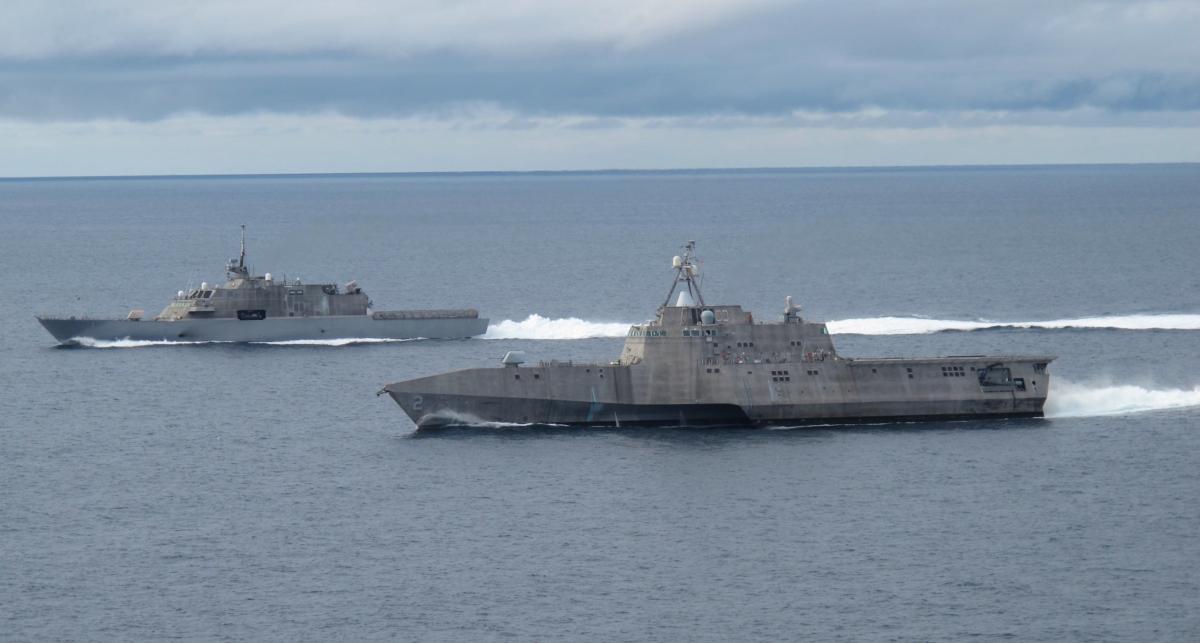With the Trump administration’s stated desire to expand the size of the fleet coupled with the Navy’s 2016 Force Structure Assessment (FSA), the Pentagon should reconsider the decision to down-select to a single design and builder for the fast frigate (FF) variant of the littoral combat ship (LCS). There are practical advantages to continuing to build both designs.
In December 2015, then-Secretary of Defense Ash Carter, in addition to cutting the total build of LCSs to 40 ships, directed the Navy to down select to a single design and builder in a winner take all face off. This was actually the original goal of the LCS program, and the down select was supposed to have been made in FY 2010. This acquisition strategy was a victim of its own success in that “it resulted in a highly effective competition and an industry response that resulted in significant potential savings for the LCS program. The competitive bids, coupled with the Navy’s desire to increase ship procurement rates created an opportunity to award both bidders a fixed price, block buy of 10 ships each through FY 2015,” as stated in the Naval Sea Systems corporate communication fact file of 15 December 2011. Thus the down select decision was postponed.
At the time the decision to defer the down select and continue with the two-track build was greeted with much criticism, rightly citing the inherent inefficiencies and increased costs of operating two different ship designs for the same mission. The Navy would have to establish and maintain two separate pipelines for parts support, training, and maintenance support infrastructure. Those structures and pipelines, however, are now in place as part of the existing LCS program. These are sunk costs that the Navy and the nation can now take advantage of for military and economic benefits.
Both the Freedom and Independence classes bring unique capabilities with corresponding advantages and limitations by virtue of their respective designs. For example, the large flight deck and inherent stability of the trimaran hull may make the Independence-class the more suitable choice for the mine countermeasure (MCM) mission. The Navy has been employing USS Independence (LCS-2) as the test platform for the MCM mission package module for more than two years.
The Navy’s Frigate Requirements Evaluation Team (FFG RET) was directed to update the 2014 Small Surface Combatant Task Force (SSCTF) analysis and assess frigate capability in view of future threats, consider hull forms other than the two existing LCSs, to include foreign designs, and look at the feasibility of expanded antiair warfare capability beyond self-defense. Using a hull form other than an LCS is a non-starter, given the design work already conducted by the current LCS shipbuilders and the constraint of finalizing a frigate design by 2019. To add the increased warfighting capabilities, lethality, and survivability likely to be recommended by the FFG RET study into either of the LCS designs risks cost and physical size growth that will distort the goal of fielding an affordable “low-end” small warship that can be built in quantity.
There are other advantages that accrue in keeping both LCS designs in production. The variety in hull forms, sensors, and weapons complicate an adversary’s tactical planning. Having another shipbuilder close up shop in a winner-take-all death match is not in the national interest, especially at a time when there is the apparent interest in expanding the fleet. Both builders turning out ships concurrently will assist greatly in the Navy reaching an increased fleet size in less time.



